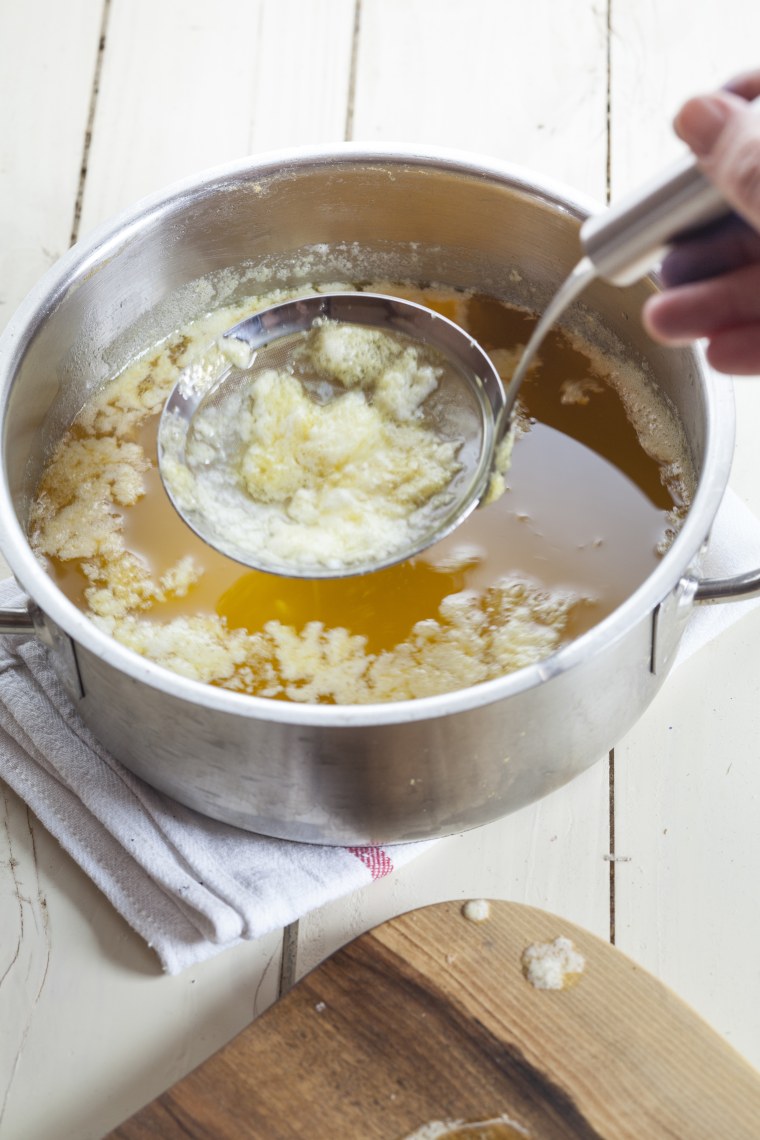Sometimes it takes a while for even the most popular of foods to reach cult status. And by a while, we mean thousands of years.
That's been the case with both quinoa, a gluten-free, grain-like seed that's high in protein; and turmeric, which has been used in Ayurvedic medicine for centuries and is now being celebrated for its anti-inflammatory properties.
With the rise in popularity of higher-fat diets, the use of ghee is gaining in popularity as well. Long used in India as a shelf-stable cooking fat, this so-called liquid gold is now finding its place in many American homes.
What is ghee?
Simply put, ghee is a type of clarified butter that's typically made from cow's milk. Since ghee is made from simmering butter gently, the resulting flavor is much more complex than regular butter. In addition to being used as an ingredient in many foods, in Ayurvedic practice, ghee is also used as a base for herbal ointments, which are then massaged into the skin to treat a variety of ailments.
How do you make ghee?
Ghee is made by simmering butter slowly to remove any milk solids and water. The extended cooking time allows the final product to develop nutty, caramel-like flavors, making it richer tasting than traditional clarified butter. Since the milk solids are removed from the finished product, ghee is suitable for people who avoid foods with lactose and casein. That's why ghee has become a popular cooking fat for those following Whole30 and paleo diet plans. Since all of the moisture is cooked off, ghee is a shelf-stable product that does not require refrigeration.

How do you cook with ghee?
Ghee can be used in the same way that you'd use butter or most types of oil. You can warm it in a pan and use it to saute your favorite vegetables. You can also melt it down and use it for baking to replace the same amount of melted butter or oil. The smoke point of ghee is also higher than butter (about 465 degrees versus 350 degrees for traditional butter), so it works well when making dishes like grilled cheese or French toast, or for any other dish where you don't an unwanted smoky flavor in the final product.
Ghee can also be used as a spread, just like butter or margarine, or even folded into mashed potatoes to add richness and flavor. Basically you can use it for anything but, like butter, any home cook should be mindful of its macro profile before overindulging.
Because ghee doesn’t contain any water, it’s slightly higher in calories than butter per serving. One tablespoon of ghee has 135 calories and 15 grams of fat, compared to one tablespoon of butter which clocks in at 102 calories and about 11 grams of fat.
Is ghee good for you?
Once the milk solids and water have been removed from the product, all that’s left is pure butter fat. The type of butter that's used to make ghee therefore likely has an impact on its relative health factor. A systematic review of several studies, published in the British Journal of Nutrition in 2016, found that milk from organic cows (organic dairy cows are fed only organic food and may not be treated with antibiotics) is higher in heart-healthy polyunsaturated fatty acids, omega-3 fatty acids, vitamin E, iron and conjugated linoleic acid (CLA) than conventional milk. Omega-3 fats are beneficial for heart health and are essential for a healthy pregnancy. CLA is helpful for maintaining a healthy weight and may assist in managing type 2 diabetes.
So, if you're shopping for ghee, choosing one that's made from organically-raised cows is the better option. Ghee made from conventionally farmed milk will be similar to using conventional butter and will not really provide a health benefit, other than being free of lactose.
Ghee certainly doesn’t need to replace all of your cooking fats, but if you're looking to experiment with new flavors, or starting a diet that requires you to forgo dairy, it's certainly worth a try. Try adding it to your favorite veggies, like broccoli or asparagus, for a deliciously rich boost of flavor.
